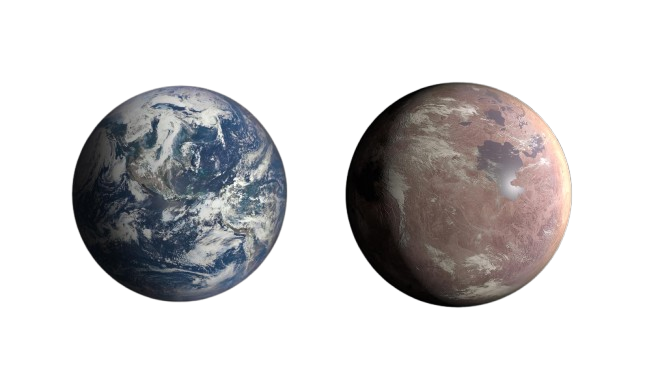Welcome
To
The Outer Space
Where We Explore Beyond Our SOLAR SYSTEM

Life Beyond Earth – Are We Alone?

“The discovery of exoplanets has reignited one of humanity’s oldest questions: Are we alone in the universe? While we haven’t found definitive proof of life beyond Earth yet, the sheer number of potentially habitable planets suggests that life could exist somewhere in the cosmos. Missions like the James Webb Space Telescope aim to study the atmospheres of exoplanets, searching for signs of life.
The Search for Other Worlds
"Imagine looking up at the night sky and knowing that there are billions of stars, each possibly harboring worlds we have yet to discover. What if there were planets out there, beyond our solar system, where life could exist? Welcome to the fascinating world of exoplanets. Today, we’ll journey beyond the boundaries of our solar system to explore distant planets that orbit other stars."

What Are Exoplanets ?
Exoplanets, or extrasolar planets, are planets that orbit stars outside of our solar system. The first confirmed discovery of an exoplanet came in 1992, and since then, thousands have been identified. These planets vary in size, composition, and distance from their host stars. Some are small and rocky like Earth, while others are gas giants like JupiterThe Discovery of Exoplanets
For decades, scientists wondered if planets existed beyond our solar system. However, it wasn’t until the early 1990s that we found the first exoplanets using advanced technology. The methods of discovering exoplanets include observing how a star ‘wobbles’ due to the gravitational pull of a planet, or watching for the slight dimming of a star’s light as a planet passes in front of it.Habitable Zones and Earth-Like Worlds
One of the key questions driving exoplanet research is: ‘Are there other Earth-like planets?’ Scientists focus on finding exoplanets in the habitable zone, where temperatures might allow for liquid water.This newly revealed world is only 1.06 times larger than our own planet. Also, the amount of starlight it receives from its host star is 75% of the amount of light Earth receives from our Sun – meaning the exoplanet’s temperature may be similar to our planet’s, as well. But unlike Earth, it orbits a red dwarf. Though none have been observed in this system, this type of star is known for stellar flare-ups that may make a planet’s environment challenging for any potential life.

Kepler-1649c orbits its small red dwarf star so closely that a year on Kepler-1649c is equivalent to only 19.5 Earth days. The system has another rocky planet of about the same size, but it orbits the star at about half the distance of Kepler-1649c, similar to how Venus orbits our Sun at about half the distance that Earth does. Red dwarf stars are among the most common in the galaxy, meaning planets like this one could be more common that we previously thought.